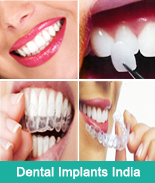 |
 |
|||||||||||||||
 |
|||||||||||||||
 |
|||||||||||||||
|
|||||||||||||||
Periodontal Procedures
Following are some of the procedures that periodontists use to treat patients diagnosed with a periodontal (gum) disease. The main cause of periodontal disease is bacteria in the form of a sticky, colorless plaque that constantly forms on your teeth; however, many other factors can cause periodontal (gum) disease or influence its progression.
- Non-Surgical Treatments
- Scaling and Root Planing
- Periodontal Surgery
- Pocket Depth Reduction
- Regeneration
- Crown Lengthening & Gingioplasty
Non-Surgical Treatments - Scaling and Root Planing
Scaling and Root Planing is the first treatment for periodontal disease. It removes all of the irritants under the gums to eliminate inflamation and infection. Half of the mouth may be numbed so that the we can comfortably remove hardened food from below the gums. This is called scaling and it's like removing the scales from a fish. Most hygienists also use ultrasonic vibrating tools to blast deposits off of teeth. It leaves a rough surface so planing is needed.
Like a carpenter planes a door to make it smooth. we surgically planes the root surfaces which allows the gums to regenerate without irritation. The gum tissue shrinks and tightens around the teeth because there is no longer anything irritating. It also reduces bleeding gums. After scaling and root planing is completed the gums heal and the results determined by charting the patient's pocket depth. The goal is a 1 to 3 mm thickness.
In some patients, scaling and root planing is the only treatment needed. It can often eliminate the inflamation and infection that promotes the tissue destruction around teeth from periodontal disease. Because it's a non-surgical treatment, patients often feel comfortable with it, however, it is most effective is treating early periodontal disease.
Periodontal Surgery
If you're diagnosed with periodontal disease, your periodontist may recommend periodontal surgery. Periodontal surgery is necessary when your periodontist determines that the tissue around your teeth is unhealthy and cannot be repaired with non-surgical treatment. Following are the four types of surgical treatments most commonly prescribed:
- Pocket Reduction Procedures
- Regenerative Procedures
- Crown Lengthening